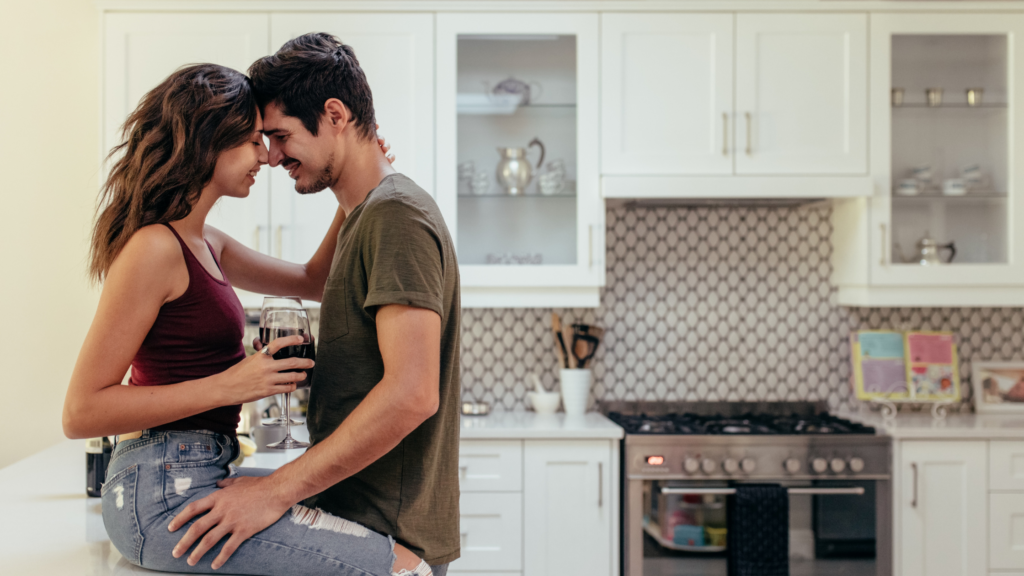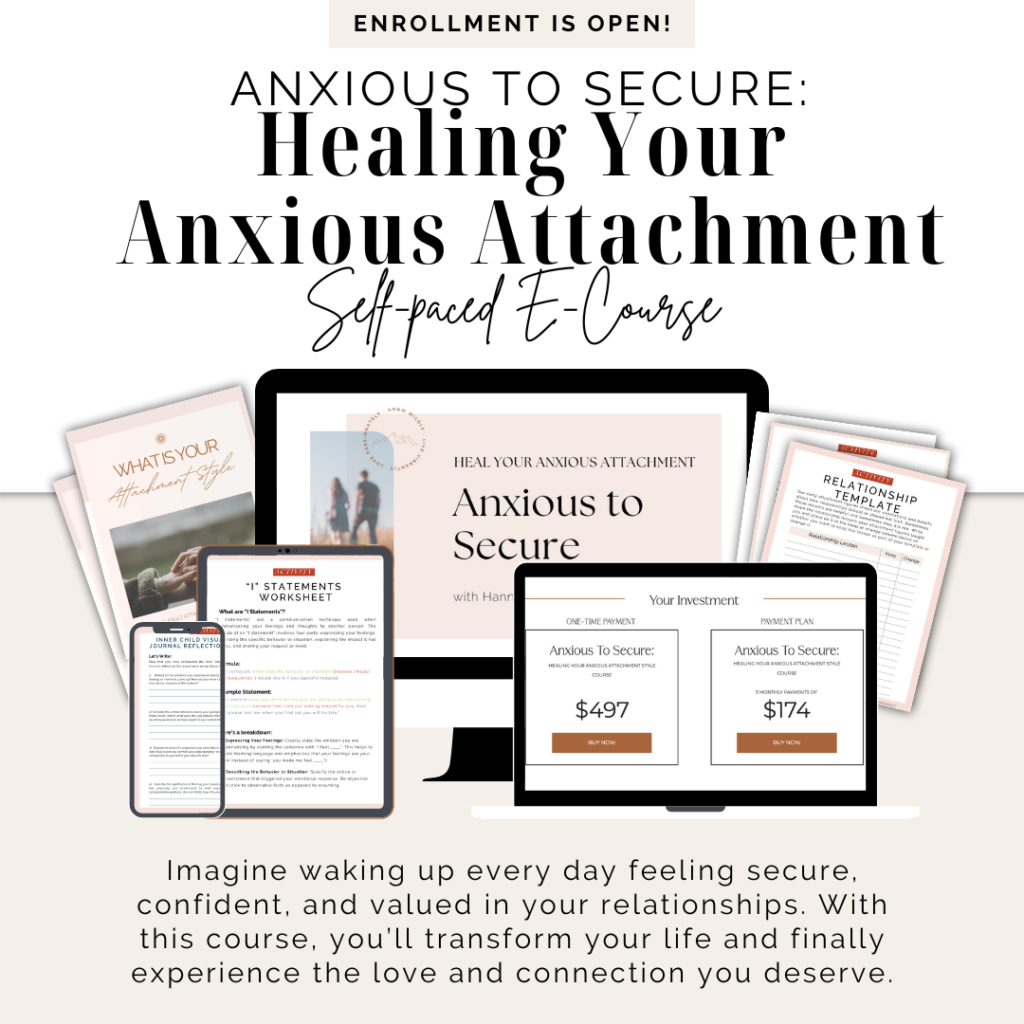© - Content and images in this blog are copyright Hannah Dorsher Coaching unless stated otherwise. Feel free to repost or share images for non-commercial purpose, but please make sure to link back to this website and its original post.
℗ - We do not store any information about your visit to our website other than for analytics and optimization for content and reading experience through the use of cookies.
℅ - Our site does at times contain paid advertisements, sponsored content, and/or affiliate links.
Reader Etiquette
Take the free attachment styles quiz.
Curious about your attachment style?
Browse by Category
Search the blog & press enter
I’M A LICENSED THERAPIST AND ATTACHMENT COACH HELPING WOMEN AND MOMS END THEIR UNHEALTHY RELATIONSHIP PATTERNS AND CREATE HEALTHY, GROUNDED, SECURE RELATIONSHIPS USING ATTACHMENT THEORY AND MY PSYCHOLOGY-BACKED PRACTICES.
Welcome to Hannah Dorsher Coaching
November 14, 2024
Attachment styles play a significant role in how we connect with others, particularly in romantic relationships. Anxious attachment, one of the primary attachment styles identified in attachment theory, can profoundly influence the types of partners we choose and how we interact within those relationships. Understanding how anxious attachment shapes your relationship choices can empower you to make healthier decisions and foster more fulfilling connections.
What Is Anxious Attachment?
Anxious attachment often develops in early childhood, stemming from inconsistent caregiving. As a result, individuals with this attachment style may become hyper-vigilant about their relationships, constantly seeking reassurance and fearing abandonment. This background can lead to patterns of behavior that affect relationship choices in adulthood.
The Impact of Anxious Attachment on Relationship Choices

1. Staying in Unhealthy Relationships
Individuals with anxious attachment often struggle to walk away from incompatible partners. The fear of abandonment can make it feel safer to remain in a relationship, even if it is unhealthy. You may convince yourself that the pain of staying is preferable to the uncertainty of being single. This fear can lead to a cycle of staying in relationships that do not align with your needs or values, as the emotional distress of leaving often feels overwhelming.
2. Choosing Partners Based on Familiarity
Anxiously attached individuals may gravitate toward partners who mirror the dynamics of their early attachments. If you grew up in an environment where love felt conditional or unpredictable, you might unconsciously seek partners who replicate that dynamic. This can manifest as an attraction to emotionally unavailable individuals or those who exhibit inconsistent behavior. The familiarity of these patterns can feel comforting, even if they lead to dissatisfaction.
3. Overvaluing Relationships
For those with anxious attachment, relationships often become a primary source of self-worth and validation. You might feel that your value is intrinsically linked to your romantic relationship, leading you to prioritize your partner’s needs over your own. This can cause you to overlook red flags or ignore your own emotional well-being in favor of maintaining the relationship. The desire to feel loved and accepted can drive you to accept unhealthy behaviors that compromise your happiness.
4. Difficulty Setting Boundaries
Anxiously attached individuals may struggle with setting healthy boundaries in relationships. You might fear that asserting your needs will push your partner away, leading to feelings of rejection or abandonment. As a result, you may find yourself accommodating your partner’s desires and neglecting your own, which can foster resentment over time. This lack of boundary-setting can perpetuate unhealthy dynamics, making it difficult to find partners who respect your needs.
5. The Hope for Change
One of the most challenging aspects of anxious attachment is the tendency to cling to hope that your partner will change. You might believe that with enough love and patience, your partner will become more emotionally available or attentive. This hope can blind you to the reality of the relationship, making it harder to recognize when it’s time to walk away. The desire for transformation can lead to a pattern of staying in relationships far beyond their expiration date, causing further emotional distress.
How to Break the Cycle

Recognizing how your anxious attachment style affects your relationship choices is the first step toward making healthier decisions. Here are some strategies to help you shift your patterns:
1. Engage in Self-Reflection
Take time to examine your relationship history and identify recurring patterns. Ask yourself questions like: What traits do my partners have in common? How do I feel in these relationships? Reflecting on your past can help you understand how your anxious attachment influences your choices.
2. Prioritize Your Well-Being
Learn to value yourself outside of your relationships. Engage in activities that promote self-love and self-care. Establishing a strong sense of self-worth can help you make choices that align with your needs rather than settling for relationships that do not serve you.
3.Practice Setting Boundaries
Start setting small boundaries in your relationships. Communicate your needs openly and assertively. Remember that setting boundaries is an essential part of any healthy relationship and does not equate to pushing your partner away.
4. Challenge Your Beliefs About Love
Examine any beliefs you may hold about love and relationships. Are they rooted in fear or scarcity? Work on reframing these beliefs to recognize that healthy love is available to you and that you deserve a fulfilling relationship.
5. Seek Professional Support
Consider working with a therapist or coach who specializes in attachment styles and relationship dynamics. Professional guidance can provide you with valuable tools and insights to help you navigate your anxious attachment and make healthier relationship choices.
Moving Toward Secure Attachment

Healing your anxious attachment style is a journey that takes time and effort. As you work through your patterns, you’ll begin to notice shifts in your relationship choices. You’ll find yourself drawn to partners who align with your values and needs, and you’ll feel more empowered to walk away from relationships that do not serve you.
Ultimately, understanding how your anxious attachment affects your relationship choices can lead to greater self-awareness and healthier connections. You deserve relationships that are fulfilling, respectful, and supportive. By acknowledging and addressing your attachment style, you can create a future filled with healthier, more secure relationships.
If you’re looking for more guidance on your healing journey, consider downloading my free anxious attachment healing guide below. It includes an attachment quiz, a four-step healing guide, and journal prompts to help you reflect and grow.
Additionally, if you’re ready to take a deeper dive, check out my self-paced digital course, “Anxious to Secure: Healing Your Anxious Attachment.” This course is designed to guide you through the process of understanding and healing your attachment wounds, equipping you with the tools you need to cultivate secure relationships. Click below for more:

